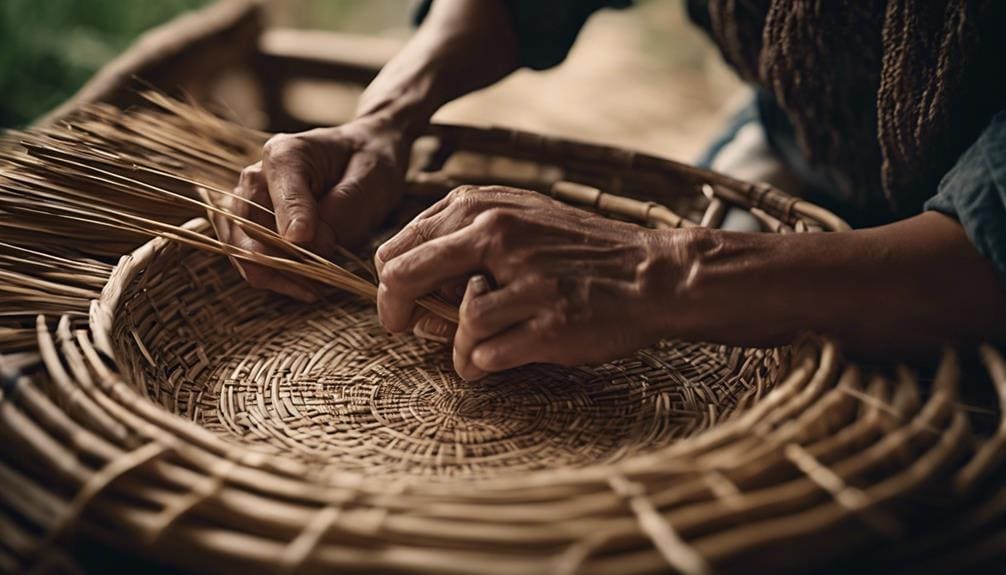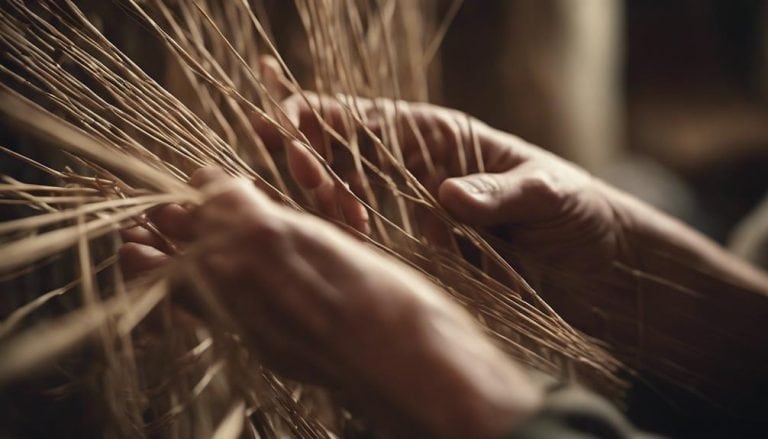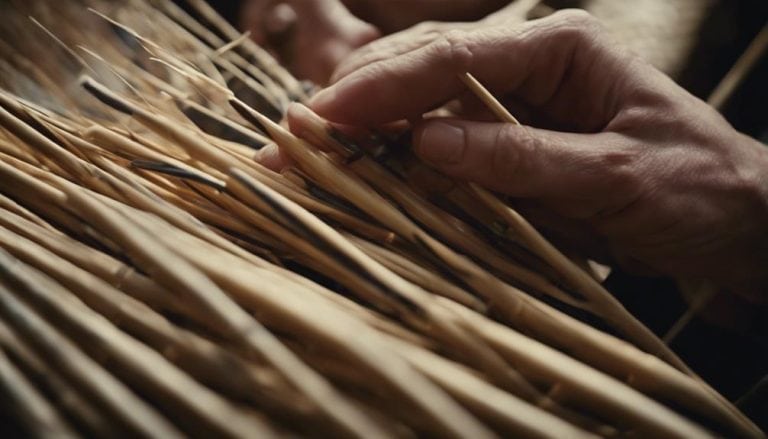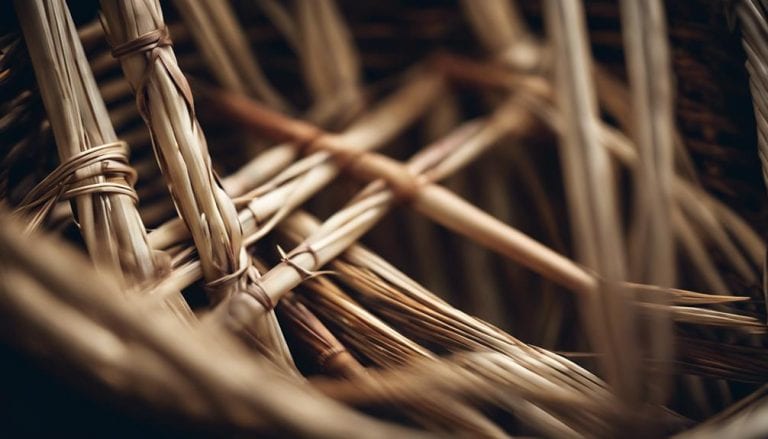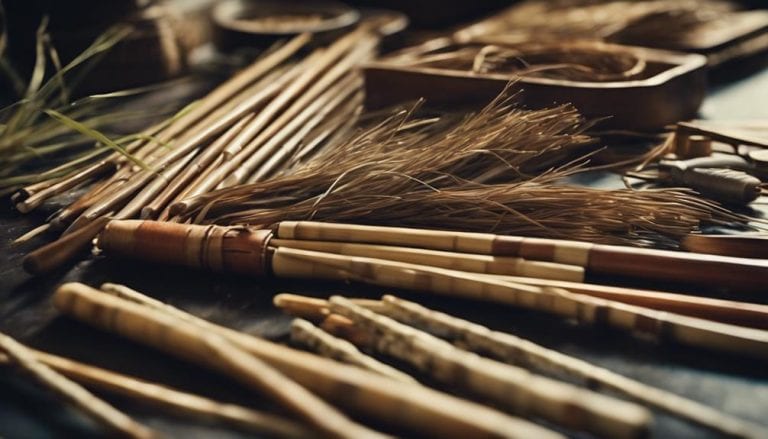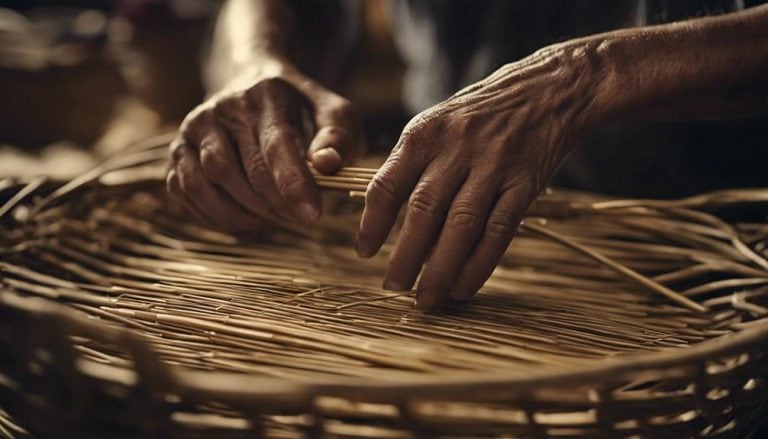Learn to Weave Baskets With Rush Reeds
As I gently bend the rush reeds in my hands, I feel connected to a timeless tradition that beckons me to explore its intricate beauty. The art of weaving baskets with rush reeds is not just about creating objects; it’s a journey of patience, precision, and creativity.
Discover how this craft can open doors to a world where nature’s bounty transforms into functional art pieces with stories within their woven strands. Join me as we unravel the secrets of this ancient craft and weave our way into a realm of endless possibilities.
To learn to weave baskets with rush reeds, start by soaking the reeds, then practice basic weaving techniques to create beautiful baskets. Enjoy the process of crafting unique pieces while honing your basket-weaving skills.
Key Takeaways
- Choose the freshest, vibrant green rush reeds for flexibility and strength
- Master basic weaving patterns for sturdy baskets with rush reeds
- Use the twining technique for a durable base and maintain even tension
- Enhance basket design with decorative elements like colored reeds or unique weaving patterns
Selecting the Right Rush Reeds
When embarking on basket weaving with rush reeds, the first crucial step is selecting the freshest and most vibrant Typha latifolia reeds for optimal flexibility and strength. Harvesting techniques play a vital role in ensuring the quality of the reeds. It is essential to choose reeds at the peak of their vibrancy, with a vibrant green color and a uniform length. Quality assessment is key; avoid any reeds that appear discolored or dried out, as these may lack the necessary flexibility needed for weaving.
To assess the quality of rush reeds, run your hands along them to feel for a smooth texture and check for any blemishes that could hinder the weaving process. You set the foundation for a successful weaving project by carefully selecting the right rush reeds. Remember, the quality of your materials greatly influences the outcome of your basket.
Preparing Your Weaving Tools
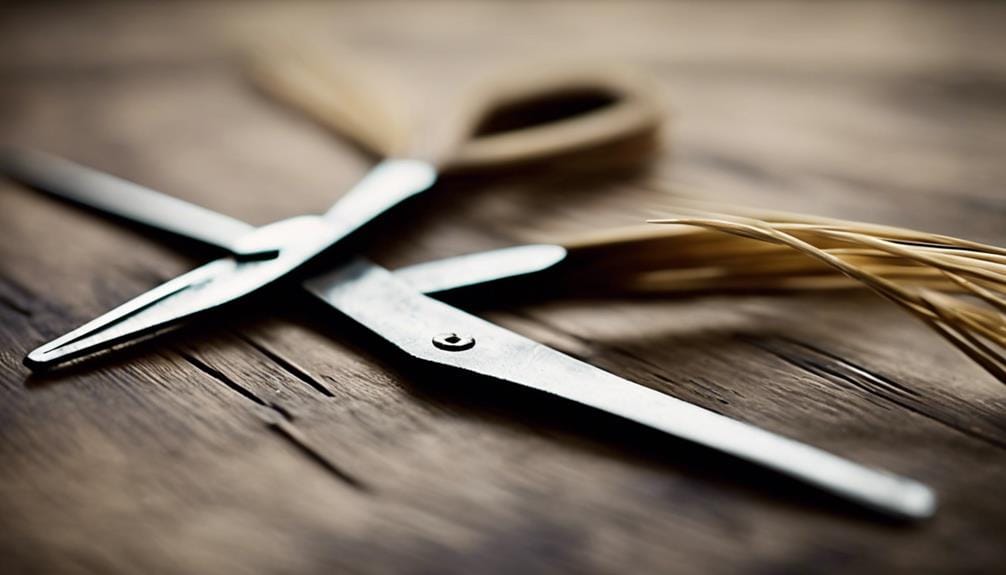
Gather essential tools such as a reed cutter, soaking basin, and twine for tying reeds before embarking on your basket weaving project. It’s crucial to ensure your tools are clean and in good condition to prevent any damage to the delicate reeds during preparation. Cleaning tools such as scissors or shears will help you trim the reeds to the desired length for weaving.
A damp cloth is nearby to wipe down tools and surfaces while working with the reeds. Proper storage is key to keeping your tools organized and in good shape for future projects. Consider using a toolbox or a designated container to store your reed cutter, soaking basin, twine, scissors, and other weaving tools. This will help you locate your tools easily and protect them from dust and damage.
Here’s a table to summarize the essential tools and tips for preparing your weaving tools:
| Tools | Purpose | Tips |
|---|---|---|
| Reed Cutter | Cutting reeds to size | Keep blade sharp |
| Soaking Basin | Soaking reeds before weaving | Clean after each use |
| Twine | Tying reeds together | Keep in a dry place |
| Scissors/Shears | Trimming reeds | Clean blades regularly |
| Damp Cloth | Wiping down tools and surfaces | Have within arm’s reach |
Understanding Basic Basket Weaving Techniques
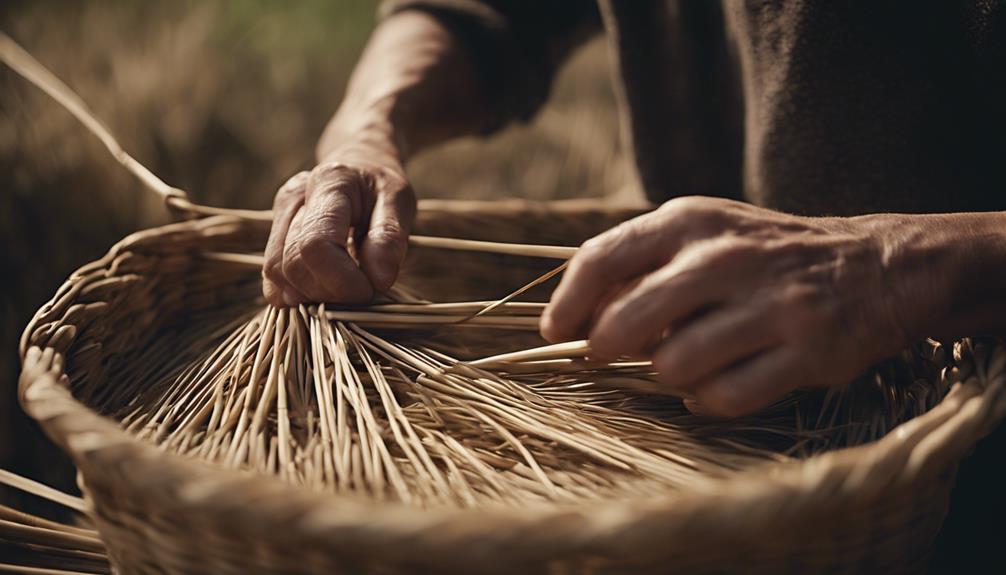
As I dive into basket weaving, mastering the basic techniques is essential for creating beautiful and sturdy baskets using rush reeds. Understanding weaving patterns and experimenting with different color choices can add a unique touch to each basket. Weaving with rush reeds involves starting with a solid base and then weaving in an over-under pattern to build the basket structure.
Being mindful of the tension and spacing of the reeds is crucial to ensure a uniform and durable final product. Rush reeds are favored for their flexibility and strength, making them ideal for crafting sturdy baskets of various shapes. Consider how the rush reeds can be manipulated to achieve different forms when exploring basket shapes.
Additionally, incorporating different techniques to create basket handles can enhance the final piece’s functionality and aesthetic appeal. With practice and creativity, basic basket weaving techniques can create beautiful and functional handmade baskets.
Creating the Base of Your Basket
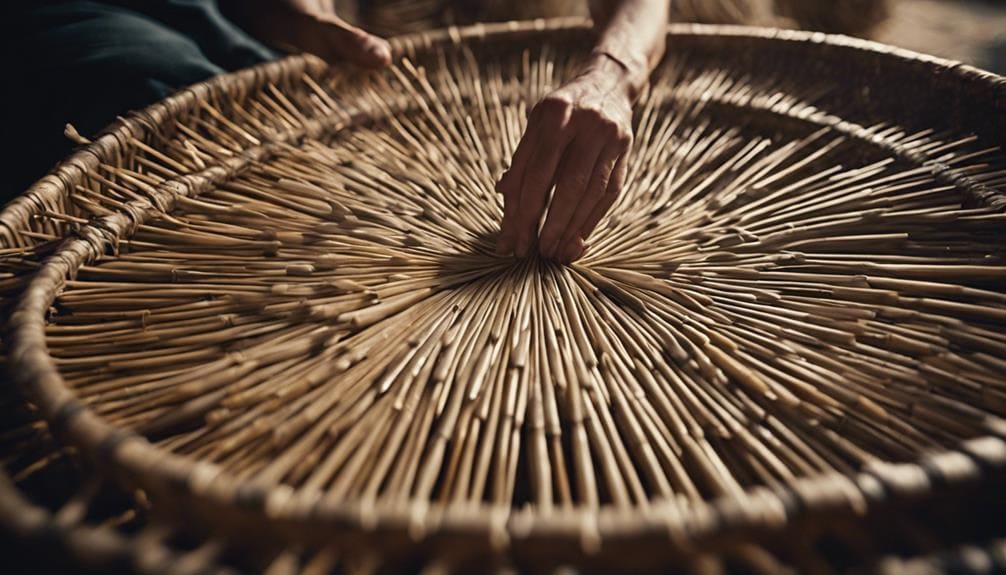
Select a durable base material such as a wooden hoop or flat reed to create a sturdy foundation for your basket. This base will serve as the starting point for your basket, providing stability and structure for the weaving process.
Here is a step-by-step guide to creating the base of your basket:
| Step | Description |
|---|---|
| Select Base Material | Choose a sturdy base material like a wooden hoop or flat reed to form the foundation of your basket. |
| Secure Base Material | Use twining to weave a few rows around the base material to keep it centered and stable. |
| Maintain Tension | Ensure even tension as you weave to prevent the base from becoming lopsided or uneven. |
| Add Vertical Stakes | Add vertical stakes to build up the basket sides once the base is woven to the desired size. |
Weaving the Sides of Your Basket
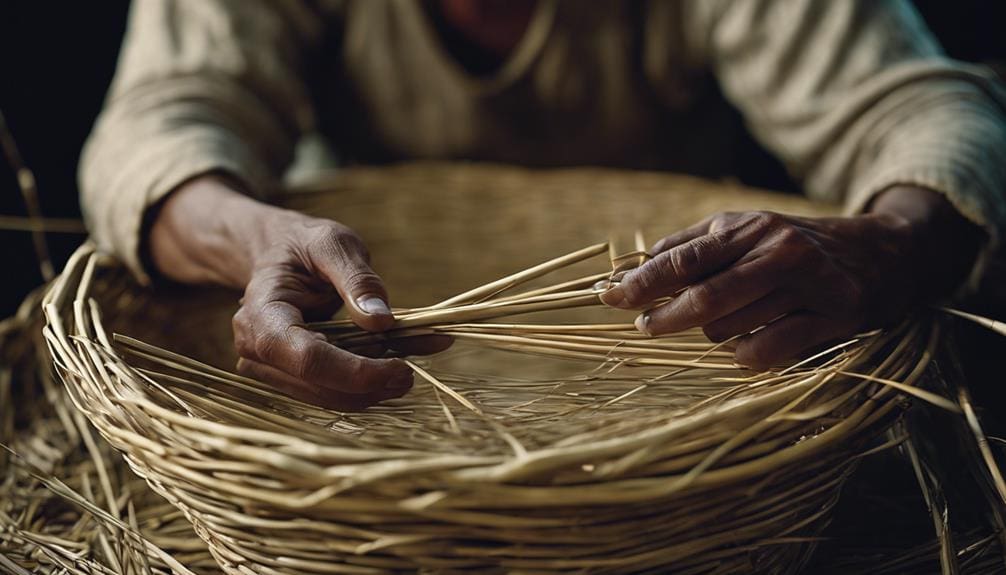
Let’s now move on to weaving the sides of your basket, building upon the sturdy foundation we crafted earlier. To shape your basket and enhance its design, follow these steps:
- Insert Rush Reeds Over and Under: Begin weaving by inserting the soaked rush reeds in an alternating pattern over and under the base reeds. This technique forms the sides of your basket while maintaining its structure.
- Maintain Even Tension: Keep an even tension as you weave to ensure a uniform and strong basket. Press the reeds together tightly to create a cohesive weave that will hold its shape.
- Angle Reeds Outward for Flared Design: As you weave upwards, angle the rush reeds slightly outward. This shapes the basket and creates a flared design that adds visual interest. Adjust the reeds as needed to achieve your basket’s desired height and shape, allowing for creativity in your designs.
Finishing Touches and Decorative Elements
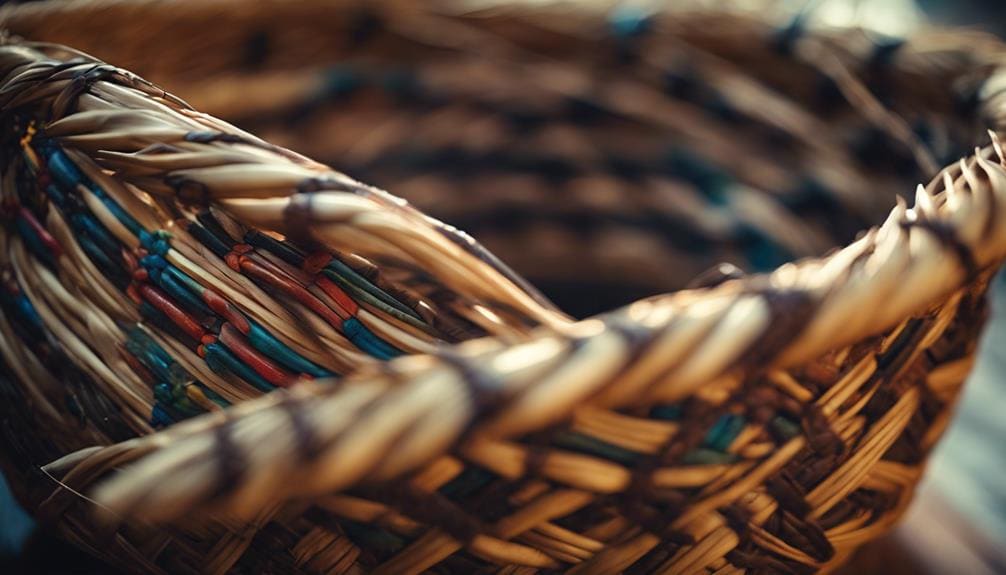
For this final touch to your woven basket, consider enhancing its visual appeal with decorative elements that reflect your unique style and creativity. Adding colorful embellishments like colored reeds, beads, or shells can bring vibrancy and personality to your creation. Experimenting with unique weaving patterns such as twill or waling can elevate your basket’s intricacy and personalized feel.
Try different techniques like braiding or wrapping for a polished and professional look when finishing the edges. Incorporating natural elements such as feathers, dried flowers, or ribbons can add a charming touch of nature to your woven masterpiece. These elements enhance the aesthetic and bring a sense of connection to the environment.
Additionally, consider adding functional designs like handles or lids to your basket for both practicality and visual appeal. These additions can complete the overall look of your creation while providing convenience and usability.
Tips for Maintaining Your Rush Reed Baskets
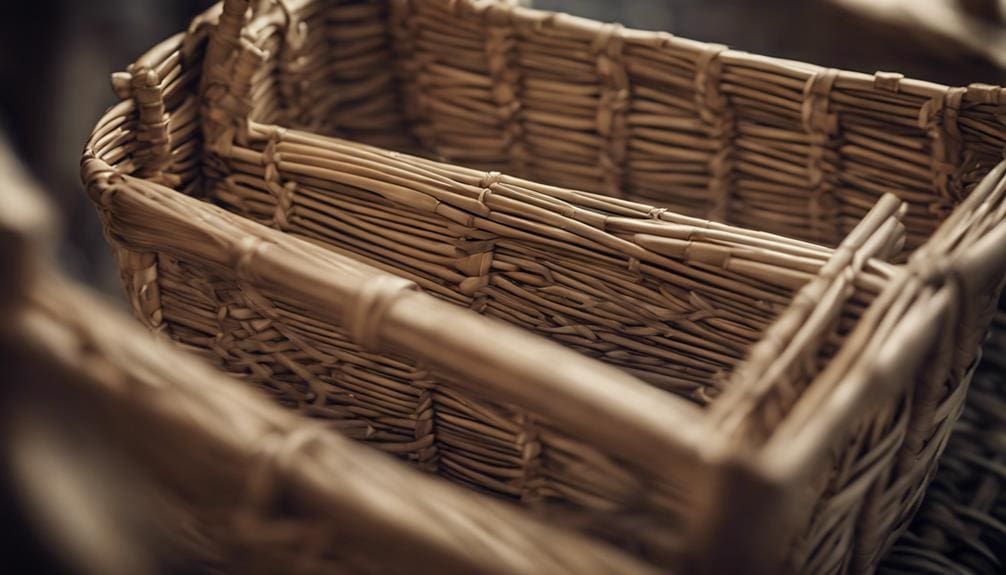
Enhance the longevity and beauty of your rush reed baskets by following these essential maintenance tips.
- Storage Solutions: Store your rush reed baskets in a cool, dry place to prevent mold and mildew growth. Proper ventilation is key to maintaining the quality of your baskets.
- Sunlight Exposure: Avoid placing your rush reed baskets in direct sunlight to prevent fading and discoloration. Consider using curtains or blinds to shield them from harsh UV rays.
- Regular Cleaning: Clean your rush reed baskets with a soft brush or cloth to remove dust and debris. Regular maintenance will help preserve their natural charm.
Frequently Asked Questions
What Are the 4 Techniques of Basket Weaving?
I know the four techniques of basket weaving: plaiting creates a flat surface, twining intertwines strands for strength, coiling builds walls in a spiral, and wickerwork uses flexible materials for a sturdy framework. Each method offers unique beauty and functionality.
How Do You Prepare Rushes for Weaving?
To prepare rushes for weaving, I soak them in warm water to make them pliable. Then, I pat them dry and start weaving using various patterns. It’s crucial to keep rushes flexible by soaking and splitting them as needed throughout the weaving process.
How Do You Prepare Reeds for Basket Weaving?
Soaking seeds in warm water for pliability and trimming ends to size is vital to preparing reeds for basket weaving. Ensure the reeds are not soggy but flexible. Pat them dry before weaving to create beautiful, sturdy baskets.
How Many Hours Does It Take to Weave a Basket?
Weaving a basket efficiently requires time management. I can complete a medium-sized basket in 6-8 hours by mastering efficient techniques and incorporating time-saving tips. Factors such as weaving patterns and material choices influence the overall process.
Conclusion
In conclusion, learning to weave baskets with rush reeds is a rewarding and creative experience. You can create beautiful and functional baskets by selecting the right rush reeds, preparing your tools, and mastering basic weaving techniques. Remember to weave with mindfulness, focus on each step, and enjoy the process. You can craft unique baskets that showcase your creativity and skills with practice and dedication. Start weaving and let your imagination soar!

